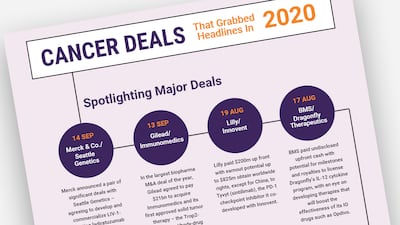ADVERTISEMENT
Outlook 2021
After a year like no other for the global medtech industry, 2021 will present a different set of market challenges for device and diagnostic companies.
Coronavirus has definitively changed health care delivery and the perceptions of health technologies and digital ecosystems. Industry will need to adjust to the aftermath of COVID-19, take opportunities and learn lessons from 2020 or 2021 could be every inch as challenging.
With the end of the Brexit transition period fast approaching, life sciences companies need to be ready for some major changes to drug regulations as well as the impact of new border and customs controls on the flow of medicines between Great Britain, Northern Ireland and the EU. In Vivo looks at what is at stake, and what still needs to be done, as the UK prepares to leave the EU single market and customs union at the beginning of 2021.
A singular focus on defeating COVID-19 will likely dominate the biopharma agenda at the beginning of 2021 and will determine how quickly the industry, and world, can bounce back to something like normalcy. New digital capabilities and learnings will continue to emerge as the pandemic ebbs, and strong industry balance sheets will keep the deal volume moving, according to experts and executives.
The emergence of multi-cancer blood tests for early detection is captivating investors and driving multi-billion-dollar acquisitions. Companies such as GRAIL, Thrive Earlier Detection and Guardant are predicting revolutionary change in the way cancer is diagnosed and treated. The biggest hurdle, however, may be coaxing health care systems and health insurers to join the revolution.
A change in direction for the French firm means a new approach to R&D. Sanofi’s global head of development and chief medical officer Dietmar Berger talked to In Vivo about what was needed to get the company’s R&D machine back on track.
In 2020, investors poured millions of dollars into biotech companies searching for new therapeutics that interact with cellular processes involving the destruction and recycling of cellular proteins. These protein degradation-targeted therapies, and molecular glues, have been attracting the attention of big pharma too.
Despite the COVID-19 pandemic, 2020 has seen a hectic pace of cancer deal-making, including the two largest biopharma M&A deals of the year and 24 deals with upfront value of at least $100m.
Medtechs took a long look at themselves as they rose to the challenges of COVID-19. How they responded, repurposed and regrouped to tackle the coronavirus was both sobering and uplifting. The lessons of 2020 must be integrated into the digitally-enabled health care systems of 2021 and beyond.
2019 saw fewer revenues-boosting major acquisitions by top-tier medtechs. Companies that reported after the calendar year-end were the first to see the consequences of the pandemic on their annual figures.
2019 saw fewer revenue-boosting major acquisitions by top-tier medtechs. Companies that reported after the calendar year-end were the first to see the consequences of the pandemic on their annual figures.
In the wake of the COVID-19 pandemic and the ensuing economic fallout, pharmaceutical companies could face a range of measures designed to cut government spending on medicines. From relaxing intellectual property rights to delaying reimbursement, In Vivo examines what might be in store for industry.











